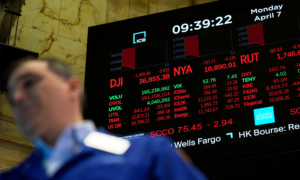Three factors are driving this shift in investor behaviour. First, there is growing awareness that high costs embedded in mutual funds can severely limit their long-term returns. For example, consider an equity mutual fund with a typical 2% management expense ratio (MER), which earns an average compound annual return of 6% before costs. Investors selling their fund after 30 years would keep less than half the fund’s pre-fee total compounded return with the rest consumed by fees. In contrast, investors in an index ETF with a typical 0.20% MER with the same 6% pre-fee return over 30 years would retain over 90% of the total return (you can run your own scenarios on the T-Rex Score calculator). Second, there are more ETFs from more sponsors than ever before and the list is growing. Third, the same big banks that dominate the mutual fund business have become the leading providers of ETFs and the online platforms that provide easy access to them.
Watch: ETFs vs. Mutual Funds fees
Most index funds are ETFs, but many ETFs are not index funds
Many people are under the false impression that all ETFs are low-cost index trackers. Not so. But it is true that the largest and most liquid ETFs are index funds that track the performance of a stock index, like the S&P 500, or a bond index like the FTSE Canada Universe Bond Index. There are also “all-in-one” ETFs offered by a number of providers which package several index funds tracking diversified Canadian, U.S., and global stock and bond indexes. These convenient all-in-one ETFs come in graduated stock/bond combinations, including 80/20, 60/40, 40/60 and 20/80.
These two classes of ETFs—single-index trackers and all-in-one ETFs—offer low cost, diversification, liquidity, choice of sponsor and convenience. There are also hundreds of higher-cost ETFs, including those focused on narrow sectors like gold, cannabis or crypto, as well as “actively managed” ETFs created by the big mutual fund providers to maintain their overall market share as growth of ETFs eclipses mutual funds.
In fairness to mutual funds, there are many low-cost index mutual funds available as well, but ETFs tend to have lower costs than passive index mutual funds. Most mutual funds remain active funds with higher fees. Most ETFs are passive funds with lower fees. The point is you cannot paint all funds with the same brush.
ETFs: with or without advice?
If you plan to make the switch to ETFs, you must first decide whether you want to pay for ongoing advice and, if so, what type and frequency of advice you need.
If your portfolio amounts to several hundred thousand dollars or more, you can find full-service advisors who will assess your circumstances, recommend an asset mix, provide additional ongoing advice and invest your funds in ETFs for an annual fee typically ranging from 1% to 1.5% over and above ETF MERs (there are some advisors who charge fees of less than 1% for those with portfolios of $1 million and higher).
If your portfolio is more modest or if you want automated investing with an asset allocation that matches your needs, there are a number of robo-advisors typically charging 0.25% to 0.50% annually on top of MERs of the mix of diversified ETFs they will manage on your behalf. This represents savings of 0.5% to 1.25% compared to a full-service advisor, albeit with less human interaction and advice.
If you have a good understanding of investment basics and have at least $25,000 or so to invest, you could efficiently create your own ETF portfolio through an online discount broker. Assuming you are a long-term, “buy and hold” style investor, your only significant cost will be the MERs of your ETFs. If you choose this route, or just want to check it out, try the “practice” trading accounts offered by many online brokers.
Investors who choose robo-advisors or online discount brokers but still want personal financial advice including retirement, tax or estate planning might consider a “fee-for-service” financial planner. Fee-for-service financial planners do not sell financial products, so they are free from the conflict afflicting many Canadian financial advisors whose compensation is based on the products they sell. Depending on the complexity of your circumstances and how frequently you need advice, supplementing do-it-yourself or robo-investing with a fee-for-service financial planner may be a very cost-effective choice.












This article is very well-timed since I am currently reading the Larry Bates book, “Beat the Bank”. I also recently listened to Mr. Bates during a webinar presented by our Regina Public Library during their financial literacy month.
I discovered that I have been paying through the nose for some of the mutual funds that I have been contributing to for years. It is really troubling that the Canadian banks are allowed to charge some of the highest fees in the world for their mutual funds. Extremely unfair, especially when a lot of people don’t have adequate pension income from their life savings!!
It is not true that you have to switch investment accounts to a new firm rather than staying with your existing online discount brokerage if you wish to have some of your investments as ETFs.
I believe this is a major error in your article.
Within a TD direct discount brokerage account anyone can hold individual stocks, ETFs, and mutual funds simultaneously.
Please let your readers know that they do not need to go to all the bother of changing discount brokerages to simply buy ETFs.
I have also started reading Larry Bates book and have started researching moving my Mutual Fund RRSP to an online discount brokerage where I already have a TFSA. How can the “in kind” move work though ? My online discount brokerage does not sell Mutual Funds (I think), so won’t I have to dispose of the mutual funds with my current provider and move it as cash ?
Also, how does one decide if it is the right time to sell the mutual funds. From July to Nov end of 2020, I see the unit values have increased and my overall return is 5%, so is that a good indication to sell the mutual funds ? Only one fund, which is a bond one has slightly gone down in value, but rest of them are up. I cannot even get a clear statement of fees I have paid them and called them only to have a 3 business day turn around for an advisor to call me. My statement or transaction history does not list the monthly fees. I just know the MER for each fund, but that does not show the real impact of fees until I see it in dollars. They hide it well.